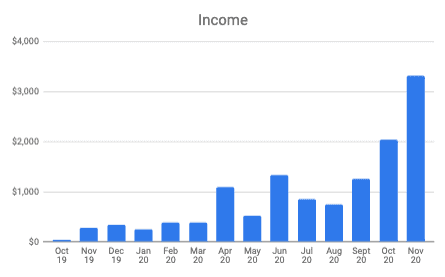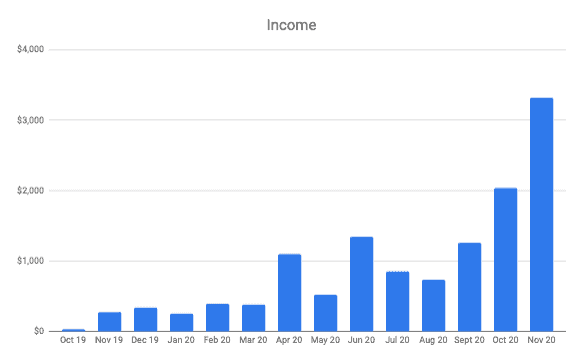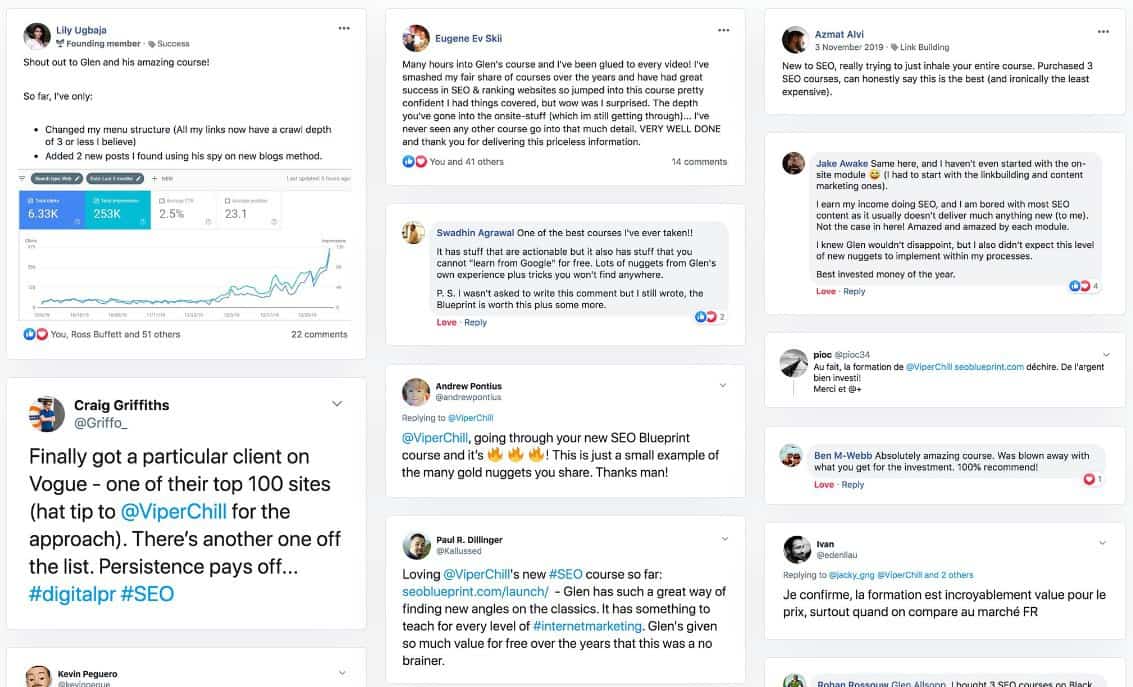You probably know that many MLMs produce income disclosure statements. But these statements are often deceptive, misleading and even leave Sherlock Holmes confused.
Chances are you've been looking for a legit way to make money from home for some time now.
And there are new MLMs created every day. With the low barrier to entry, many people consider this as a great way to become their "own boss".
But just how many people actually make any money as a MLM rep?
This MLM income disclosure statement study has researched 167 multi-level-marketing companies. By using the income disclosures & compensation plans that were provided (and some detective work) it proves exactly how many people make money as a member of MLM companies.
MLM income disclosure statements infographic
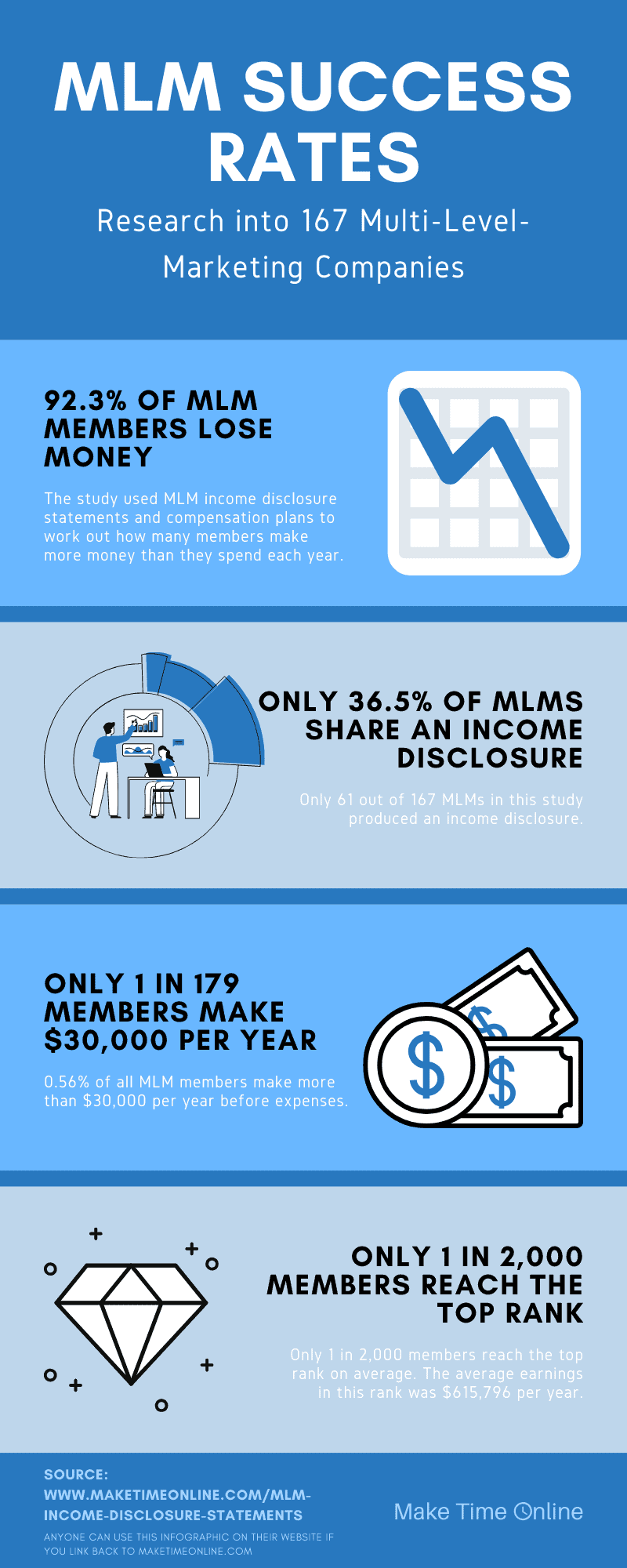
You can embed this infographic into a blog post through Visual.ly
*Feel free to use this infographic or any of the stats in this study. All I ask is that you kindly link back to this study from your post.*
MLM income disclosure statements study
A 2011 FTC study suggests 99% of all MLM representatives from 350 MLMs lose money. But I became very intrigued into how this research was carried out as it's quite a bold claim.
Was it really that accurate?
After all, other research suggests that 73% of MLM members lose money.
And here's a quote from the FTC research...
"MLMs make gambling look like a safe bet".
Is it just me or do you feel like there is some sort of bias from Jon Taylor (the guy who produced this research)?
Now, I'm not saying that I am "for" MLMs and I completely agree with many of the points he makes in the study. You just need to compare the difference between Affiliate Marketing vs MLMs to see the issues in the business model.
Previous flaws in research
However, there are some clear flaws I found in previous research:
- Assumptions are made about the members annual expenses
- Estimating drop out rates (sometimes pressuming as low as a 5% annual retention rate)
- The profit/ loss calculation multiplied the final number by 0.1 to account for previous years drop out rates.
- Many MLM members earn income from purchasing products and selling them on in person. This income cannot be shared in income disclosures as there is no way to track this.
Now, I don't deny the thinking here. There is proof that 90% of all MLM members drop out within the first 5 years of joining. Nevertheless, some of those who have dropped out will have made a profit, even if it was small.
Also, it's likely that some of the active members not making profit in the current disclosure will make profit in the future. But there is no way for us to know what these figures will be.
Therefore, I personally think it's only fair to go off the current stats produced by the MLMs to avoid biased presumptions.
How many MLMs have income disclosure statements?
167 MLMs were used in this study.
But only 61 of these MLM companies produced an income disclosure statement. This means that...
36.5% of MLMs produce income disclosure statements.
There's no legal reason for MLMs to produce these income disclosures but it is an opportunity for the company to represent themselves more fairly and honestly.
MLMs often have the label of a "get rich quick scheme" or "pyramid scheme".
If they provide a legitimate income disclosure it is a great way for them to be more open and honest to people considering joining. However, many MLMs go to great lengths to manipulate these figures, as you may have seen before!
MLM success rate
This study found that...
Only 7.7% of all MLM members make any money.
It's a success rate that is still very low considering that legitimate small businesses are profitable 39% of the time.
But this is a statistic that is certainly in line with previous research into MLM success rates.
Calculating how many people make money in MLMs
We wanted this research to be fair and unbiased.
But we also wanted it to be as accurate as possible.
And if you've ever looked at a MLM compensation plan or income disclosure before you probably know it's easier to solve a rubik's cube blindfolded than it is to understand them.
Here are just a few of the issues we were up against and how we solved the problem...
Issue 1- Hidden members in MLM income disclosure statements
It's common for MLM income disclosure statements to only include "active members" in their stats. There are very few transparent income disclosures like this...
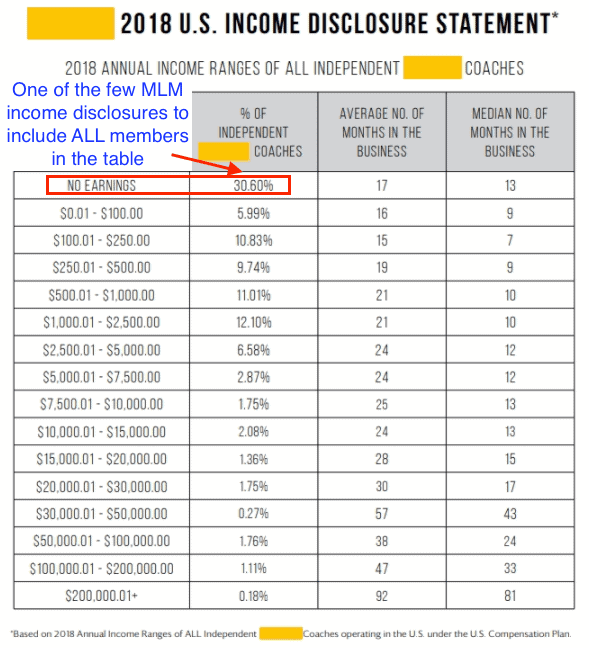
However, not every income disclosure makes it clear about who is and who isn't included in the numbers.
Solution to hidden members
The answers were often times in the small print on the disclosure. It just took a bit of detective work to calculate the correct numbers.
But luckily, there were only 3 out of 61 statements that we couldn't confirm who was included in the stats. The average "success rate" of these MLMs was 8.8% so they are still pretty close the average and are marked in the table below with an asterix (*).
Issue 2- limited number of MLM income disclosure statements
Only 61 out of 167 MLMs provide an income disclosure.
It's not a legal requirement for MLMs. But it's certainly a red flag if it isn't provided as it's promoted as a "business opportunity".
Solution to limited income disclosures
It could be argued that these companies have an even lower success rate. So we could account for that in the figures with an estimate.
However, we want this research to be as unbiased and accurate as possible. So any MLM that doesn't provide an income disclosure wasn't included in the final stats.
Issue 3- Not all income is tracked
A huge issue not even accounted for in the FTC 2011 study was this...
Income made from buying the MLM products at wholesale price and selling them on at retail price in person cannot be accounted for in income disclosure statements.
There is no way for MLMs to report how much money was made from their members by selling physical products to friends and family in person. See an example below...
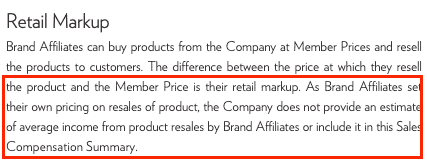
Many MLMs encourage their members to purchase a "product pack" with a range of products at a discounted price at the start. This could be used personally or sold on to friends and family for a profit.
"Home parties" or selling physical products in person is still a huge marketing tactic used by MLM members. However, income disclosures cannot account for this (they only track income from bonuses and commissions made from the individuals websites).
Solution to allow for missing income
There's no real solution to this issue as it can be totally different for members. But this is another reason that we conducted the research accounting for these things:
- We only used the stats provided- we did not account for previous members who lost money before the documented year
- The expenses we used were the lowest average expenses without taking into account other unknown costs
- Not all MLM members focus on selling products in this method
We feel this balance of using the figures provided and giving the MLMs the benefit of the doubt for expenses helps to make the stats more accurate.
Issue 4- Expenses not included- income is not profit
The figures provided in income disclosures is not profit.
MLM members will also have ongoing expenses to market the products or to "remain active". When you read the small print you find out the sneaky truth...

Small print reads: These figures do not represent Independent Consultants' profits, as they do not consider expenses incurred by Independent Consultants in the promotion of their business and do not include retail commission from reselling products.
But there are even disclosures that don't even acknowledge the figures are just gross revenue and not all profit.
Solution to working out expenses
We used the MLM compensation plans to find out:
- Total cost to join
- Costs for a "product pack" (or equivalent)
- Monthly sales quota (i.e. 100 PV per month is often $100 a month)
- Other monthly requirements i.e. cost for a website or autoship
We did not account for additional unknown costs such as:
- travel expenses,
- additional training,
- postage and packaging
- or any other marketing expenses
Therefore, the unknown costs of potential extra income from reselling of physical products is a fair way to cancel both of these unknowns out to get more accurate figures.
Here is an example of the costs we know for certain from a MLM...

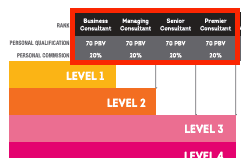
- Zurvita costs $35 to join.
- $139.95- $549.95 for one of the "start pak"
- 70 PV sales quota = $100 x 12
Total cost for 1 year = $1,374.95-$1,784.95
An argument here is that any sales members make each month can be taken off the monthly sales quota.
However, most MLMs encourage an "autoship" to make sure they "remain active" and therefore spend the money every month.
Other people argue that if members are using the products themselves then it's not really an expense. But products can typically be found for a fraction of the cost elsewhere and rarely need to be purchased in the quantities required to "remain active".
How many MLM members lose money?
This research proves that 92.3% of all MLM members lose money.
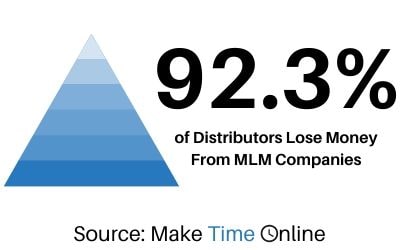
The information provided from 61 MLMs in their compensation plan and income disclosure is enough to fairly and accurately prove this without assuming additional expenses or profit.
Tired of the 9 to 5 grind? Check out how I make money online here!
61 MLM income disclosure statements
|
Key Findings
- The range of MLM members who lose money = 72.5%-99.91%
- Total average MLM members who lose money = 92.3%
- The average amount of members earning over $30k a year = 0.56%
Research disclaimers...
* MLMs that did not disclose if their income disclaimers include all members or not.
** Average annual expense = Joining costs + Product pack + monthly sales quota
4Life example...
- $25 joining fee
- $146- $525 enrollment pack
- 100 PV monthly sales quota = $120 x 12
Total cost for 1 year = $1,611- $1,990 (average = $1800.50)
***Using the income disclosures: % of members earning less than the avg expense + weighted amount of percent in the next "income category".
4Life example...
- 16% of distributors earn no income at all
- 86.7% (88.8% overall) earn less than $900
- 96.7% (97.2% overall) earn less than $6,576
91.1% of all 4Life members earn less than $1,800.50 per year and therefore lose money.
106 MLMs without income disclosure statements
|
The bottom line
Previous research has over generalised success stats inside MLM companies. They have used assumptions around how many members have dropped out in previous years and do not account for all profit made by members such as direct retail sales.
It is possible to make money from MLM companies.
However, the focus on recruiting and selling overpriced products means that most people do not make money.
The only way to make decent money in any MLM is by recruiting a lot of people who will inevitably lose money. Which is hardly an ethical business model.
Hence, it's clear to see why 92.3% of all MLM members lose money.
*Please do share this with anyone that you think may find this useful. Feel free to use the graphics or any of the stats in this study. All I ask is that you kindly link back to this study from your post.*



